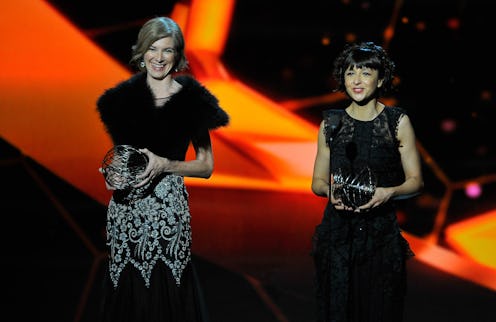News
This Amazing Invention Made TIME's Top 100 List
This year, TIME magazine's 100 Most Influential People list includes widely revered people like Malala Yousafzai and Tim Cook, and some who are perhaps just widely recognized, like Kim Kardashian and Kim Jong-un (it's not every day you get to lump those two together). And there are numerous individuals on the list who you may have never heard of, but whose work will change the world as we know it. Two of the most revolutionary visionaries on the list are Emmanuelle Charpentier and Jennifer Doudna, whose CRISPR-Cas9 gene-editing technology is a molecular biology breakthrough that could potentially lead to curing every major disease.
Doudna is a chemistry and molecular and cell biology professor at the University of California at Berkeley, as well as an investigator at the Howard Hughes Medical Institute in Maryland. Charpentier is the head of the Department Regulation in Infection Biology at the Helmholtz Centre for Infection Research (HZI) and a professor at the Hannover Medical School in Hannover, Germany. Together, they combined their knowledge and expertise to create the CRISPR-Cas9, a method for precisely manipulating gene material that could be applied to targeted disease treatments. Surprisingly, the CRISPR-Cas9 was inspired by a humble bacterium. Doudna and Charpentier developed the technique based on a bacterium's ability to eradicate invading viruses precisely, an evolutionary trait that has helped them survive natural selection. The biologists studied this survival mechanism in bacteria and used it as a model for their own technology.
What the CRISPR-Cas9 allows scientists to do essentially is manually remove and add genetic material, a capability that could have monumental implications. For example, a biologist could use the technique to manipulate cancer cells so they'll be more vulnerable to chemotherapy, turn sickle cells into healthy cells, and remove HIV altogether. In other words, the CRISPR-Cas9 could potentially cure every major disease in existence.
Chief Scientific Officer Paul Stoffels of Johnson & Johnson, who awarded the duo its Dr. Paul Janssen Award for Biomedical Research last year, said in a statement:
Their discovery of this new DNA editing strategy is considered one of the most significant breakthroughs in molecular biology in the past decade. We are pleased to be able to recognize two researchers whose insights, persistence and collaboration have led to a significant leap in our understanding and ability to manipulate genetic processes. The work of Drs. Doudna and Charpentier has the potential to make a significant impact on human health.
Beyond its revolutionary health applications, the CRISPR-Cas9 has the potential to be applied for other practical purposes, like industrial and agricultural genetic engineering and genetic research.
As for Doudna and Charpentier's personal reasons for creating the CRISPR-Cas9, they want what any good scientist wants: to improve the world. When receiving the Dr. Paul Janssen Award, Doudna said in a statement:
I have always focused on basic research, motivated by a desire to understand the world. I am very happy about the possibility that this research can lead to something that can be used therapeutically and improve people's health.
Charpentier had an equally optimistic message about their breakthrough invention:
I am excited about the potential of our findings to make a real difference in people's lives. The discovery demonstrates the relevance of basic research and how it can transform application in bioengineering and biomedicine.
Images: Getty Images (3)
